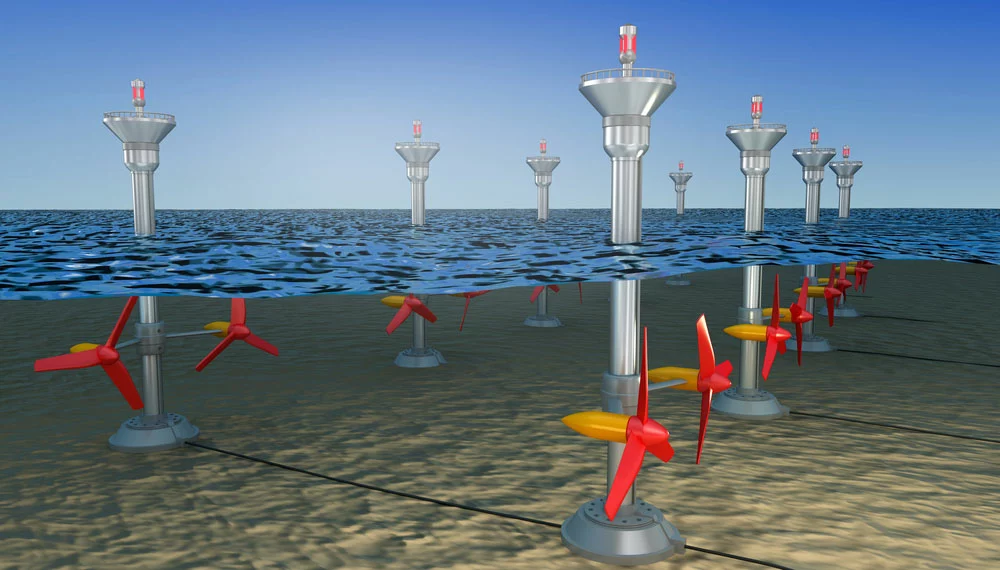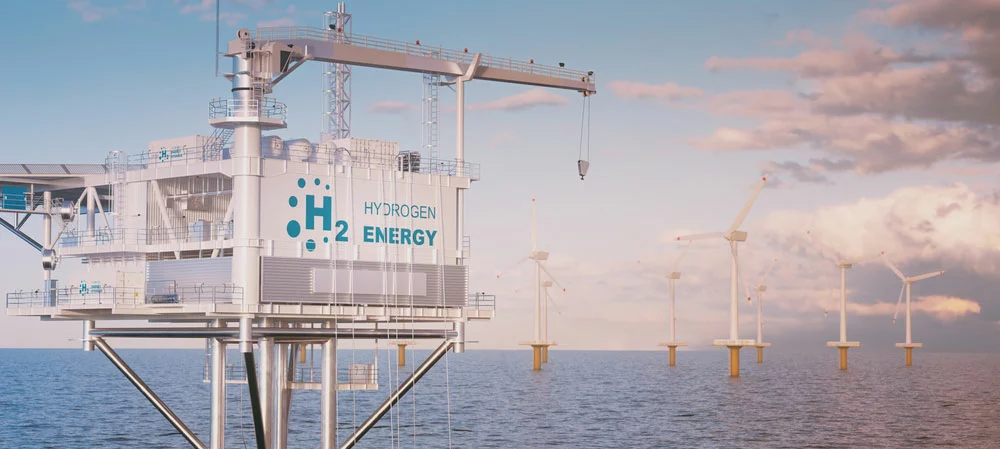Often, people view oceans as a place to relax and take vacations. But what many people don’t realize is that the ocean has the potential to produce 20,000-80,000 terawatt hours of renewable energy each year. So why aren’t people utilizing more of this ocean’s energy potential through waves and tides? Let’s explore the ocean energy pros and cons to find out.
What is Ocean Energy?

The ocean
Ocean energy is a form of renewable energy harvested from the ocean. It uses the potential energy in the height difference between two water levels to create electricity. There are many different types of ocean energy, including wave power, tidal power, and thermal energy. While each method has its unique challenges, all forms of ocean energy have the potential to provide clean, renewable power for homes and businesses around the world.
Types of Ocean Energy
There are four main types of ocean energy:
Wave energy

crashing ocean wave
This is a type of renewable energy that emanates from the waves in the ocean to generate electricity or pump water. The wind produces wave energy on the ocean when it blows, causing a height difference in the water. This energy is highly dependent on the wind’s strength, which varies significantly in the ocean. Turbines can then harness the wave energy and generate power.
Wave energy is a promising renewable energy source, but it is still in its early stages of development. There are several types of wave energy devices, and there is a need for more research to determine which type is the most efficient and cost-effective.
Tidal Energy

Tidal energy illustration
The gravitational attraction between the moon and the sun causes a pulling effect on the earth’s oceans. There is high tide when the sun and moon are close together and low tide when they’re further apart. This movement occurs once or twice a day. Tidal energy can power 10 billion 100-watt bulbs switched on simultaneously. The possibilities are endless!
Ocean Thermal Energy Conversion

The Ocean Thermal energy conversion plant
Ocean Thermal Energy Conversion (OTEC) relies on the temperature difference between the warm surface of the ocean and the cold depths as you go lower. To create energy using an OTEC system, you first pump warm seawater into an evaporator. The steam from the water turns a turbine which creates energy. Next, pump cold seawater from the ocean’s depths to cool down any moisture- this is a continuous process.
TSalinity Gradient Energy

The Salinity Gradient Energy illustration
Salinity Gradient Power is energy extraction from the natural difference in salt levels between seawater and freshwater from rivers. You can find this gradient in places where rivers drain into the ocean. Harnessing this power depends on osmosis using reverse electrodialysis and pressure retarded osmosis.
Advantages of ocean energy
- Unlike fossil fuels, ocean wave energy is a renewable resource that won’t run out.
- Ocean energy produces zero carbon emissions to the environment. Therefore, it is green and helps conserve the ozone layer.
- Ocean wave energy is a clean source of power. The construction of wave farms uses minimal materials, and their operation produces no harmful waste products.
- Countries can use ocean wave energy to meet peak power demand in remote areas without an electrical grid. In the UK, clean ocean energy from Fancy Bay Tidal Lagoon has powered 155,000 homes for the past 120 years.
Disadvantages of ocean energy
There are, however, some downsides to ocean energy:
- The cost of power generated from the ocean is much higher than from land-based sources. This is because the field of ocean energy is relatively new; therefore, research is ongoing on technology to lower the cost of ocean energy power.
- The supply of ocean energy may be inconsistent as it depends on variables beyond human control. Waves are unpredictable, and the quantity of power harnessed might be unreliable.
- The complex devices used to generate ocean energy may malfunction and release contaminants such as oil into the ocean, thus causing pollution.
- The ocean energy devices’ noise may disturb marine life and disrupt its natural habitat.
- Ocean energy harnessing devices may alter the behavior of marine animals. Recent research has shown that some marine animals cannot avoid hitting these devices, changing some species’ behavior.
Ocean Energy Technology

Ocean energy technology illustration
On a scale of ocean energy pros and cons, the cons currently outweigh the pros due to the inhibitive cost of setting up these plants. However, advancement in tech is making ocean energy a more attractive resource. The field of ocean energy is still relatively new as compared to other forms of energy generation. Scientists tested the prototype for the world’s first offshore energy converter in 2003. It is known as the Wave Dragon and uses turbines to generate electricity.
In September 2022, two inventors filed a patent for a flexible wave energy converter they could soon install in oceans. The devices use many tiny converters to form one sizeable, flexible converter that turns ocean energy into electricity.
The oscillating wave surge converter is an instrument that generates power through the movement of ocean waves. It is fixed to the sea floor on one end and has a flexible pedal. When ocean waves move the pedal, it turns a piston that pumps pressurized water to an onshore turbine, generating electricity.
The point absorber buoy is another piece of technology that generates power from waves. The buoy is attached to the sea floor by a shaft fixed to a generator in the buoy. Movements from waves create energy in the buoy as it moves the generator. Electricity generated is pumped onshore.
Technology meant to harness tidal energy has been in existence for slightly longer. The first use of tidal energy dates back over 1,000 years when waterwheels milled grain. The first tidal barrage was constructed in France in 1966, generating 240 MW. It was the largest in the world until South Korea eclipsed the Europen power plant when they commissioned a 254 MW tidal barrage in 2011.
Uses of Ocean Energy: What does ocean energy power?

Ocean energy powering various cities
Electricity harnessed from ocean energy is just like power from other sources. It runs homes when added to the national grid. Furthermore, due to its proximity to the coast, ocean energy is used to power desalination plants that turn seawater soft, making it drinkable.
You can also use marine energy to supply compressed air for aquaculture farms and produce hydrogen via water electrolysis. Additionally, ocean energy can power marine transport, including ships and submarines.
Summary
Ocean energy is a renewable energy source that has not yet been fully developed due to the prohibitive cost of technology and the negative environmental impact. However, recent technological advancements may soon make ocean energy a more attractive option. The ocean’s potential is enormous, and harnessing even a fraction of that power could significantly contribute to the world’s energy needs.
